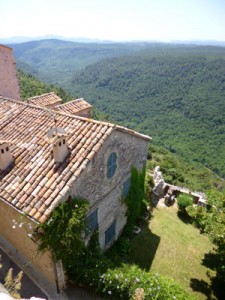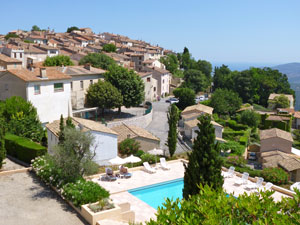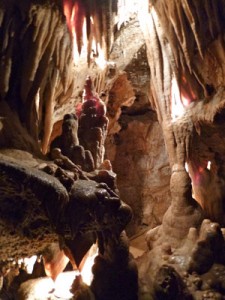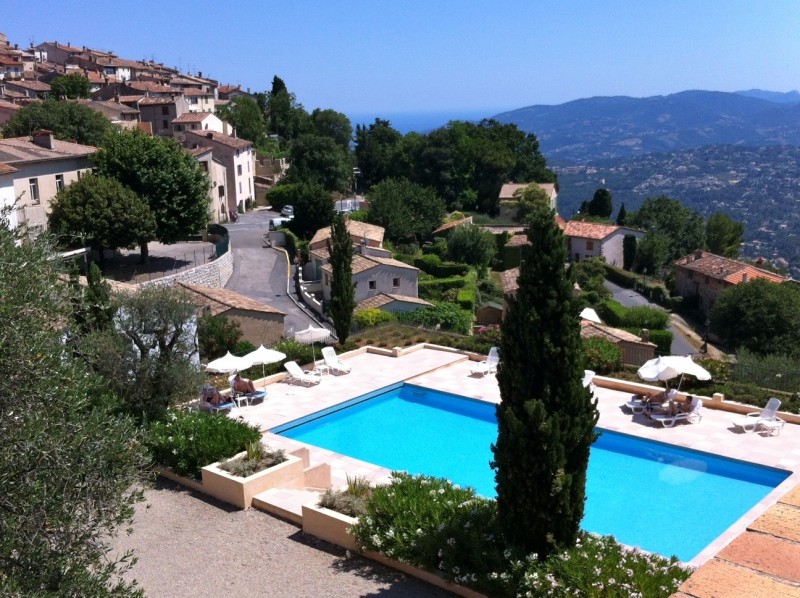I’ve had a suggestion for my blog. I love reader contributions – and what marvelous timing! We’ve been flat out with visitors. Creative time has disappeared as quickly as an entire baguette once gorged by my enormous black Labrador.

Oxana, a good friend from my London banking days, was passing through the Côte d’Azur a couple weeks ago when we squeezed in lunch together. She was staying in one of those perched villages in the distant hills – the so-called Préalpes (the ridges before you officially get into the Alps) that hug the coastal region around our Bellevue. The location prompted Oxana’s question: How do all these pretty, little French villages survive?
It’s hardly an esoteric question for financière-types like Oxana and me, but I’d reckon it might pique the curiosities of non-bankers, too. How many times have I driven through the outskirts of the Côte d’Azur, or through the undulating French countryside, and wondered exactly the same thing!
In short, how do the good folks of sweet French Podunk actually feed themselves?
In fact, just a couple days before I lunched with Oxana, Philippe, Lolo and I had returned from a long weekend in France’s celebrated Loire Valley. As we drove through the rambling countryside strung with bike paths and vineyards, its hills sprinkled with chateaux and picturesque little villages, I’d asked Philippe, half-rhetorically, that very thing: How did communities survive?

I went on to explain. The villages definitely needed a postman or two, and a couple doctors and pharmacists. Ditto a handful of firemen, policemen and a vicar to head the peal of church bells. Depending on the size of the village, there might be positions available at un tabac, une boulangerie, une boucherie and maybe even a full-on grocery store. There’d be des fonctionnaires – of course, there’d be a whole host of government workers – as every tiny town seemed to foot the bill of a stately and prominently situated mairie, complete with geranium-filled window boxes. And being the Loire Valley, there were most definitely vineyards and sprawling fields for vintners and farmers, and hotels and restaurants to support a fluctuating tourist season.
But these job opportunities hardly seemed enough to employ an entire region – all year-round, right? So what did people do? Where did the money come from to keep those pretty little window boxes so pretty?

Neither Philippe nor I could solve the riddle. Then Oxana posed the same question, this time aimed at the fringe of the Côte d’Azur. The Question grew especially curious here in the Préalpes of the French Riviera, where there’s hardly the breath of open field to grow a head of lettuce!
Maybe there are lots of retirees, Oxana suggested.
Yes. But still.
I posed Oxana’s Question to my English entrepreneur friend who has lived and worked in the Côte d’Azur for six years. She’s so involved in the community that if any outsider could answer this question about France, I figured it’d have to be her. One time, in fact, I’d asked her whether she considered herself partially French these days. No, she said, without even a second thought. She was totally English. She spoke in English and worked with Anglophones. Then she paused. She was a bit French, after all, but only when she argued. She could argue as well as the French.
Anyway, this very English friend who’s truly invested in France reminded me how popular the fonctionnaire/governmental profession is in l’Hexagone. It employs a whopping 50%-or-so of the working population. Indeed, an article in The Economist during the run-up to France’s springtime elections cited a similar statistic: The French state, at 56% of GDP, is the largest of any euro country. Someone does, indeed, populate those beautiful mairies.
But Oxana’s Question stayed with me. A few days after our lunch, Philippe, Lolo and I decide to be proper tourists ourselves, as we occasionally do. It’s like anywhere. If you simply live in a place, you miss some star attractions. In the dozen years I lived in London, I spent precisely 45 minutes in the British Museum.

That Saturday morning our family decides to take a drive to the Grottes de Saint-Cézaire. We maneuver the congested Côte d’Azur highway from Antibes and Cannes, leaving the sparkling Mediterranean behind us as we cut inland toward Grasse, and then westward into the Préalpes. A winding road traces through the quaint, perched villages of Cabris, Spéracèdes and Le Tignet.
The Grottes de Saint-Cézaire are a wonder of stalactites and stalagmites, iron-imbued rock and pure calcite stone. This series of vertically linked caves plunge 100 meters into the earth (40 of which are on show), where temperatures remain cool and the atmosphere calm all year long, no matter what madness unfurls on the land up above. Indeed, the wiry speleologist who shows us around says he prefers inhabiting this quiet, underground refuge. It’s far preferable to the sprawl and soaring temperatures of the real world – whether that world is the crazy Côte d’Azur or even these calmer parts.

And what luck! We visit the grottes on one of the last days of the low season; this period runs for the bulk of the year when the caves host about 100 visitors a day. The following week, and for the ensuing four or five, the attraction is expected to receive more like 1,000 tourists each day. (A quick calculation from the banker types: Nearly 90% of the Grottes de Saint-Cézaire’s annual revenues come from that handful of high-season weeks every summer.)
Exiting the grottes, we continue along the twisting road into the caves’ namesake village, Saint-Cézaire-sur-Siagne. Another of the area’s walled towns, it perches on the edge of a cliff. The valley below marks the boundary between two French départements: the Alpes-Maritimes (home to our Antibes and the rest of the Riviera) and the more forested, pastoral Var. Put very simply (as the Var does include the likes of throbbing St Tropez), going from one département to the other is basically akin to moving from a line of Coppertone-impregnated beaches to the sun-soaked fields and vineyards that produce France’s abundance of cut flowers and rosé wine.

Being past midday, Saint-Cézaire’s Saturday market is packing up in the main square outside the old rampart walls. Vendors move their produce, pottery, clothing and jewelry from fold-up display tables, piece by piece, back into the crates and wooden boxes from which they’d come.
Philippe tries to purchase a few apples, but the vendor cannot make the sale. He already cleared the day’s revenues at the mairie – so he offers us three apples, one each, as a gift. Of course we protest. “C’est normal,” he says kindly but insistently.
It’s certainly not normal to me. Apples in hand, we enter the 12th-century gate of Saint-Cézaire’s rampart walls and nose around the narrow alleys within the limestone village. They offer up darling things that you’d expect to see in an archaic town: a 14th-century chapel-turned-private residence, a 12th-century feudal castle-turned-mairie (what else!), and an awe-inspiring, panoramic view. We may not be far from Bellevue as the seagull flies, but the feverish world of the Côte d’Azur feels utterly foreign.
Philippe, Lolo and I return to the large, cobbled square outside the ramparts for a spot of lunch. It’s evident that here is where the population congregates and lives. There’s a pharmacie and a branch of La Poste. Tucked into some corner must be a boulangerie; no living, breathing town in France could survive without one. And there’s a handful of cafes and bistros, their tables flung out onto the square and occupied by chatting clienteles.

Brasserie La Fontaine looks the most inviting. Its decor is sleeker than it really needs to be in this setting, but the view from my seat – a magenta-coloured mesh chair set in a white metal frame – is exactly what I’d hoped to find on my family’s day out in the French hillside. Beside our table is an enormous platane tree, its roots probing beneath the rumpled cobblestones of the square. Next to it is the storied Fontaine aux Mulets, or Mules’ Fountain, that dates to a comparably recent 1868. Church bells chime intermittently. Nearby a young man sweeps up after the Saturday market with a stick broom.
Philippe reads one of the brasserie’s posters as we wait for our meal. Morning coffee, orange juice and a pain au chocolate – all for a two-Euro coin. “Try finding that in the Côte d’Azur,” he says.
We’re not that far away from the French Riviera, in all truthfulness, but it feels as if we’ve landed in another era – when people led their mules to the fountain and swept with stick brooms. When things could cost a single coin – if the vendor didn’t insist on giving them to you for free.
My lunch plate even harks back to the olden days. The brasserie’s chèvre salad is called l’aumônière, a sweet term for the church’s purse. On a bed of greens lies a thick slice of velvety goat’s cheese, mingled with honey and sprinkled with a generous dash of pepper. It’s wrapped in a crisped crêpe that’s cinched at the top like a purse of alms, similar to one that might have dangled from the belt of some medieval resident of this walled village.
Our lunch in Saint-Cézaire is turning out to be too postcard perfect not to ask Oxana’s Question. A woman comes to our table to check that everything’s fine. She’s a pretty middle age, her dark hair falling fully around slender shoulders. I guess she’s the owner of this café, possibly having taken the business on from her parents. That’s how things seem to go anyway.
Philippe and I are très complimentary. “Yes, the food is delicieux, merci! But une petite question: What do people DO around here for work?”
We flesh out The Question – the enduring puzzle we encounter whenever we travel into small, far-flung French villages that still luxuriate in their own post offices, stunning mairies, tidy market squares and plethora of adorable cafes. What’s more, all this is available here in Saint-Cézaire, where for a good 10 months of the year the biggest local attraction brings in a miniscule 10% of the annual tourist traffic!
The dark-haired woman is dumbfounded. She’s wondering what planet we’re from. “People work in factories,” she stumbles.
She’s searching for words. You can tell she wants to add, “Isn’t that obvious, you numbskull…?”
“And there are visitors here all year round! And this is the banlieue of Grasse and Cannes! People here work in Grasse and Cannes – even in Nice!”
At the mention of Nice, the café owner stretches her hand, almost in supplication, toward a woman seated at the table behind me. The customer is nodding profusely, her blonde ponytail bobbing in unison. “Ben oui, à Nice!” she says. She, too, looks a little shocked.
Philippe and I are getting educated. People travel out of Saint-Cézaire to work in these bigger cities! It takes only (an unbelievably short) 30 minutes to reach Cannes! And then these commuters return home at night and live here in Saint-Cézaire – a place where “it’s like we’re always on holiday!”
Okay, the café owner does have a point. And I’m hardly a speleologist.
This may not be statistical proof to answer Oxana’s Question, but I’m definitely getting a flavor of the right response. As so often is the case in France, the solution to any equation involves the style de vie – that famous and intoxicating obsession with lifestyle.
“Does everyone ask you this question?” I say to the pretty, dark-haired woman. The “everyone” is a slip of the tongue, but somehow I’m hoping that Philippe and I aren’t entirely alone, or offensive, in bringing this hard-working café owner into our fanciful debate on village economics.
“Non,” the owner says. In fact, she tells us, precisely no one has asked such a (brazen) question. Then she pauses and looks at us carefully, almost suspiciously. “Are you from the Côte d’Azur?”
We nod hesitantly. Yes, we have, indeed, traveled here from that distant land.

